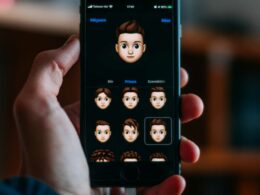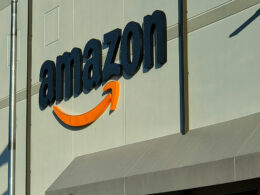Emmanual Probst teaches Consumer Market Research at UCLA and writes about consumer psychology for numerous publications.
We live in the “culture of me,” where publishers, search engines and social media platforms put before us content and products they seemingly handpicked for us, and for us only. We all have a personal assistant — a virtual one that is. Google Home, Siri, and Alexa listen to everything we ask them and then deliver promptly. Apple Music, Spotify and Pandora know what music we listen to now and predict what we’ll want to hear next. In fact, they tell us what we will like.
by Emmanual Probst
Thanks to our smartphones, all these interactions with brands, content and people happen in a second. Laying our thumbs on that 6-inch screen, we instantly upload videos, update our status, “like,” post, repost, respond to followers. But the adrenaline rush triggered by a “like” or text message quickly fades, prompting us to post or text again to fill the void and not feel unfulfilled for too long. Instant gratification does not translate into lasting satisfaction. So, beyond the likes we receive and the products recommended for us, how can our interactions with media, people and brands feel deeply personal and rewarding?
Why we post on social media
We like to talk about ourselves, and social media is the perfect venue for that. Unlike in-person communication, where we can’t think much ahead of what we are going to say, talking online gives us ample time to choose the words, pictures, photos, videos and captions we use to present ourselves in the best possible light. Psychologists call this self-presentation. And to boost our self-esteem, we tend to visit our own online profiles.
That’s because social media shows us a positive, even idealized version of ourselves, unlike a mirror that reminds us who we really are. Digital interactions also give us plenty of time to think how we are going to reply to someone else’s comment. Even text that is perceived as somewhat instantaneous is way slower than in-person communication: imagine staring at someone for 5 or 6 seconds before answering a question; that would feel like an eternity!
It is also easier to be emotionally detached over online communication than it is in-person, as we don’t communicate with facial clues and body language. As we are increasingly busy browsing through our posts and planning our next one, we forget how to talk to people: my therapist admits that 50% of the work he does with patients revolves around honing in on basic in-person communication skills. Many of his older patients have lost their ability to communicate their feelings face-to-face. The younger ones have never even learned.
We share on social media to feel connected to our “followers” and tell them who we want them to think we are. When they like or comment on our posts, it boosts our self-esteem. When we like their posts, we feel we reinforce the closeness of our relationship. By doing so, we also create reciprocity, whereby we feel obligated to give back to others the same way they gave to us in the first place. If someone says hello to you, you will likely reply in kind. Not saying hello to him or her would just be awkward.
We are addicted to dopamine
Dopamine has an addictive effect, causing us to seek our next incoming text, email, like or message endlessly. Discovered in 1958 at the National Heart Institute of Sweden by Arvid Carlsson and Nils-Åke Hillarp, dopamine is a substance created in the brain that is critical to functions such as sleeping, mood, attention, motivation and reward. Dopamine causes us to seek out, want and focus on pleasure. It is what makes us curious about new ideas and fuels our search for information.1 Contrary to popular belief, it isn’t dopamine but the opioid system that makes us experience pleasure. In other words, dopamine drives your “wants,” whereby it propels you to take action (for example, scrolling through posts on Instagram).
In contrast, the opioid system drives your “likes.” That is, it makes you feel satisfied and pause your seeking. The dopamine system is stronger than the opioid system, causing us to seek out new things more than feeling satisfied with our finds.
Part of the reason why social media, the internet and texts are addicting is because they instantly fulfill our desire to seek. LinkedIn tells us who started a new job. Facebook and Instagram alert us to where our best friends are. A text message confirms that we have a date tonight.
Consumer Psychology: How to deliver instant gratification
Delivering instant gratification might become a make or break for marketers. Here’s how brands can win by delivering the most relevant, personalized content in near real-time, at the moment of need.
Implement tools such as chatbots that immediately respond to the most common customer service requests or take orders. Pizza Hut customers can easily order pizza from Twitter or Facebook Messenger. They can also ask questions, see current promotions and re-order their favorite pizza.
Minimize your online customers journey time by adding a “buy now” button, automatically logging users in, and distilling the checkout process down to one step. The latter will drastically reduce basket abandonment (when a visitor to an online store leaves before completing their purchase); a single-page checkout outperforms multistep checkout by almost 22%.
Enable customers to buy online and pick-up in store, giving them the option to go to the store immediately as opposed to waiting for their delivery. Once at the store, up-sell your customers on companion products to their recent online purchases.
Enable your customers to take Instagram-worthy pictures in your store. Right after purchasing the product is the moment when customers are most excited about a new purchase. Set up a backdrop and some proper lighting. Let people take their own picture or have your associates take their photo (waiters do this in restaurants many times a day). Encourage your customers to post their pics on social media, which turns into free advertising for your store.
The above is an except from “Brand Hacks: How to Build Brands by Fulfilling the Consumer Quest for Meaning” by Emmanuel Probst, published by Simon & Schuster.
 Emmanuel Probst is global lead for Brand Thought-Leadership at Ipsos. In his book “Brand Hacks,” Emmanuel explains how to build and grow brands by fulfilling the consumer’s quest for meaning. He also teaches Consumer Market Research at the University of California at Los Angeles (UCLA), and writes about consumer psychology for numerous publications. Emmanuel earned an MBA in Marketing from the University of Hull, United Kingdom, and a doctorate in Consumer Psychology from the University of Nottingham Trent, United Kingdom.
Emmanuel Probst is global lead for Brand Thought-Leadership at Ipsos. In his book “Brand Hacks,” Emmanuel explains how to build and grow brands by fulfilling the consumer’s quest for meaning. He also teaches Consumer Market Research at the University of California at Los Angeles (UCLA), and writes about consumer psychology for numerous publications. Emmanuel earned an MBA in Marketing from the University of Hull, United Kingdom, and a doctorate in Consumer Psychology from the University of Nottingham Trent, United Kingdom.
This article originally appeared in SmartBrief. Photo by Victoria Quirk on Unsplash.














2 comments